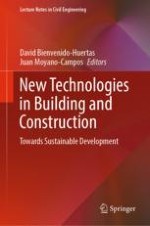2022 | OriginalPaper | Chapter
Identifying and Describing Energy-Poor Household Groups. A Comparison Between Two Different Methods: Conventional Statistical Characterisation and Artificial Intelligence-Driven Clusterisation
Authors : Ana Sanz Fernández, Miguel Núñez Peiró, José Antonio Iglesias Martínez, Agapito Ismael Ledezma Espino, Carmen Sánchez-Guevara Sánchez, Marta Gayoso Heredia
Published in: New Technologies in Building and Construction
Publisher: Springer Nature Singapore
Activate our intelligent search to find suitable subject content or patents.
Select sections of text to find matching patents with Artificial Intelligence. powered by
Select sections of text to find additional relevant content using AI-assisted search. powered by
